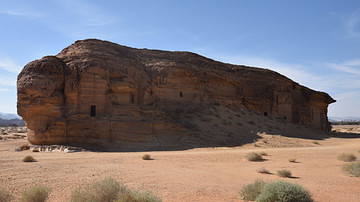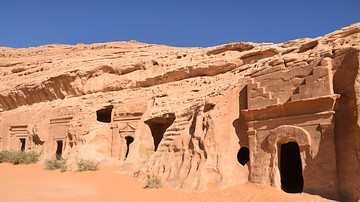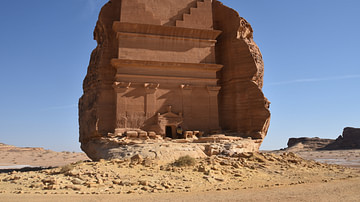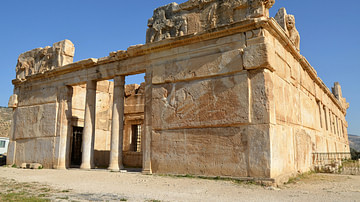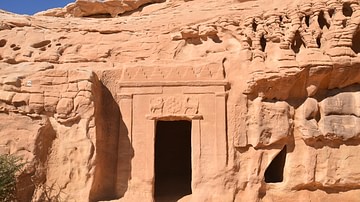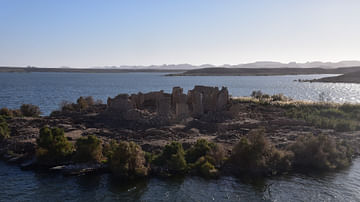Illustration
Two tomb façades in Qasr al-Bint (Tombs 21 & 22), one of the necropolises of Hegra (Mada'in Salih) in modern-day Saudi Arabia. Tomb 22 (right) is the oldest dated façade in Hegra (along with Tomb 39). It was carved in 1 BCE, the 9th year of the reign of King Aretas IV Philopatris. The Nabataean inscription above the doorway also states that it was carved for Aydu ibn Kuhayl and his descendants and that the deities Dushara, Manat and Qaysha protect this tomb.
Hegra was the southernmost capital of the Nabatean people, a once-nomadic Arabian tribe that settled and grew wealthy from trade in frankincense, spices and other luxury commodities. The Nabatean city peaked between about 50 BCE and 106 CE. Hegra is Saudi Arabia’s first UNESCO World Heritage Site.
About the Author
Cite This Work
APA Style
Raddato, C. (2024, February 21). Tombs 21 & 22 of the Qasr al-Bint Necropolis in Hegra. World History Encyclopedia. Retrieved from https://www.worldhistory.org/image/18503/tombs-21--22-of-the-qasr-al-bint-necropolis-in-heg/
Chicago Style
Raddato, Carole. "Tombs 21 & 22 of the Qasr al-Bint Necropolis in Hegra." World History Encyclopedia. Last modified February 21, 2024. https://www.worldhistory.org/image/18503/tombs-21--22-of-the-qasr-al-bint-necropolis-in-heg/.
MLA Style
Raddato, Carole. "Tombs 21 & 22 of the Qasr al-Bint Necropolis in Hegra." World History Encyclopedia. World History Encyclopedia, 21 Feb 2024. Web. 28 Mar 2025.



